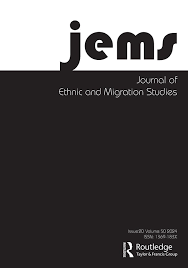Spatial overlap: trade-offs in refugees' residential choices
 Prof Dr. Merlin Schaeffer has put out an article along with Jonas Wiedner for the Journal of Ethnic and Migration Studies (JEMS) which is further addressed in the following abstract.
Prof Dr. Merlin Schaeffer has put out an article along with Jonas Wiedner for the Journal of Ethnic and Migration Studies (JEMS) which is further addressed in the following abstract.
Abstract:
Social science research gives rise to what we call the ‘refugee mobility puzzle’: While restrictions on the freedom of residence limit refugees’ socio-economic integration, those who do not face such restrictions often move to areas with high unemployment that similarly hinder their labor market prospects. This study addresses a central element of this puzzle: What draws refugees to high unemployment areas?
We propose the spatial overlap hypothesis arguing that refugees in comparatively generous reception systems initially prioritize or are forced to prioritize non-labor-market resources such as affordable housing and proximity to social networks. Thereby they often settle in areas with general economic disadvantage as such areas frequently overlap with said resources. Based on the IAB-BAMF-SOEP Survey of Refugees this study tracks residential histories of more than 2,400 refugee respondents across all German counties and postcodes.
Discrete choice models show that preferences for cities, lack of affordable housing, the presence of small, service-oriented companies, and co-ethnic communities explain refugees’ gravitation to disadvantaged areas. These results support the spatial overlap hypothesis and suggest that recently approved refugees face trade-offs: area characteristics that are initially attractive tend to spatially overlap with such that likely inhibit longer-term integration prospects.
Full Article: Spatial overlap: trade-offs in refugees’ residential choices
